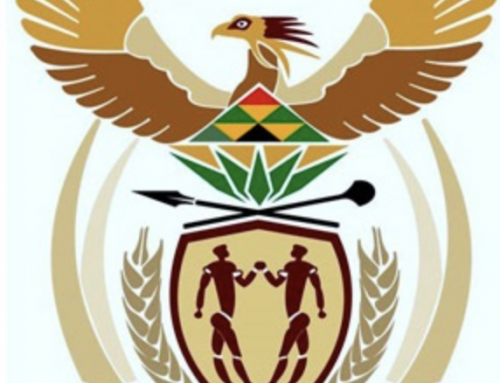The first South African newspaper, The Cape Town Gazette and African Advertiser appeared on 16 August 1800, during the first British occupation. This paper, which was published in English and Dutch, later became the Cape Government Gazette, which has continued in modified form to the present day. The first unofficial newspaper, the South African Commercial Advertiser, was founded in 1824 by Thomas Pringle and John Fairbairn, settlers of Scottish descent. George Greig, the printer, was also a British settler. The establishment of this newspaper led to a dispute concerning censorship with Governor Lord Charles Somerset that had far-reaching effects on the South African press. The paper was suppressed by Somerset, but eventually, in 1829, an ordinance removed from the Government the power of interfering with the Press and made newspapers subject only to the law of libel. The success of the British in their struggle for the freedom of the press resulted in the first unofficial Dutch newspaper, De Zuid-Afrikaan, being established in 1830. In the following year, the Grahamstown Journal became the first newspaper in the eastern part of the Colony. The freedom of the press was later acknowledged in other parts of South Africa, with the result that newspapers played an important part in the politics of the various colonies and republics, as they do in South Africa today.
Search our South African Government Gazettes here which are published on a weekly basis since 1994 for the legal notices of deceased estates only.
The Cape Government Gazette or the Staatscourant was first published in 1826 and is still published weekly to this day. Archived copies of this publication are used extensively by both genealogists and historians alike. Originally the title was Kaapsche Stads Courant en Africaansche Berigter – The Cape Town Gazette and African Advertiser.
This official publication of the Government of the Republic of South Africa is administered by the Department of the Interior and printed and published by the Government Printer. It brings laws, regulations, proclamations, Government notices, and similar matters to the attention of the public. It is published each Friday, or any other day if the need arises, in Pretoria or Cape Town. All laws are published in separate gazettes, and the regulations promulgated in terms thereof, are published in issues known as the Regulations Gazette. The normal issues contain proclamations, Government notices, including notices of a temporary character submitted by departments of government, and notices that members of the public are required by law to publish in the Gazette. These include the following: business and company notices, notices of judicial sales, of lost documents and of change of name, court orders, and estate and naturalization notices.
Other interesting information to be found in the Government Gazettes is when people sometimes apply to have their names changed by deed poll. Such changes are announced in the Government Gazette. During the period 1881 to 1913 about 40 000 Jews, mainly from Eastern Europe, emigrated to South Africa, and from 1900 to 1910 for instance, lists of the names of many of these Jews who became citizens of the Cape Colony were published in the Cape of Good Hope Government Gazette. The Archives of the Red Cross of the Transvaal Republic contain registers of Transvaal and Free State burghers on commando, classified according to districts (RK 27-69). There are a series of reports, lists, registers, and indexes pertaining to burghers killed or wounded. Names of dead and wounded were also published in the Government Gazette. In addition, there are reports of prisoners of war who died listed in the Gazettes and excerpts from official English Newspapers of lists of deceased prisoners of war.
This goldmine of Cape Colony history does not only provide information on dreary government notices or proclamations but provides a rich record source for baptisms, marriages, deaths, passenger lists, military deserters, ship arrivals and departures, wanted criminals, property sales, lost relatives, abandoned children and animals, advertisements, sales, classifieds, as well as liquidations and sequestrations.
These publications can be found at The National Archives in Cape Town under the CCP index Cape Colony Publications (1652–1910) in the reading room.
Where to find the Government Gazettes
- University of Cape Town
- National Library of South Africa
- EGGSA
- Ancestors South Africa
- Official Government Gazette Website
- Historical online versions
- National Archives of South Africa
Sources
- Standard Encyclopaedia of South Africa published in 1970 by Nasionale Boekhandel
- Handbook for Genealogical Research in South Africa published in 1990 by The Human Sciences Research Council






